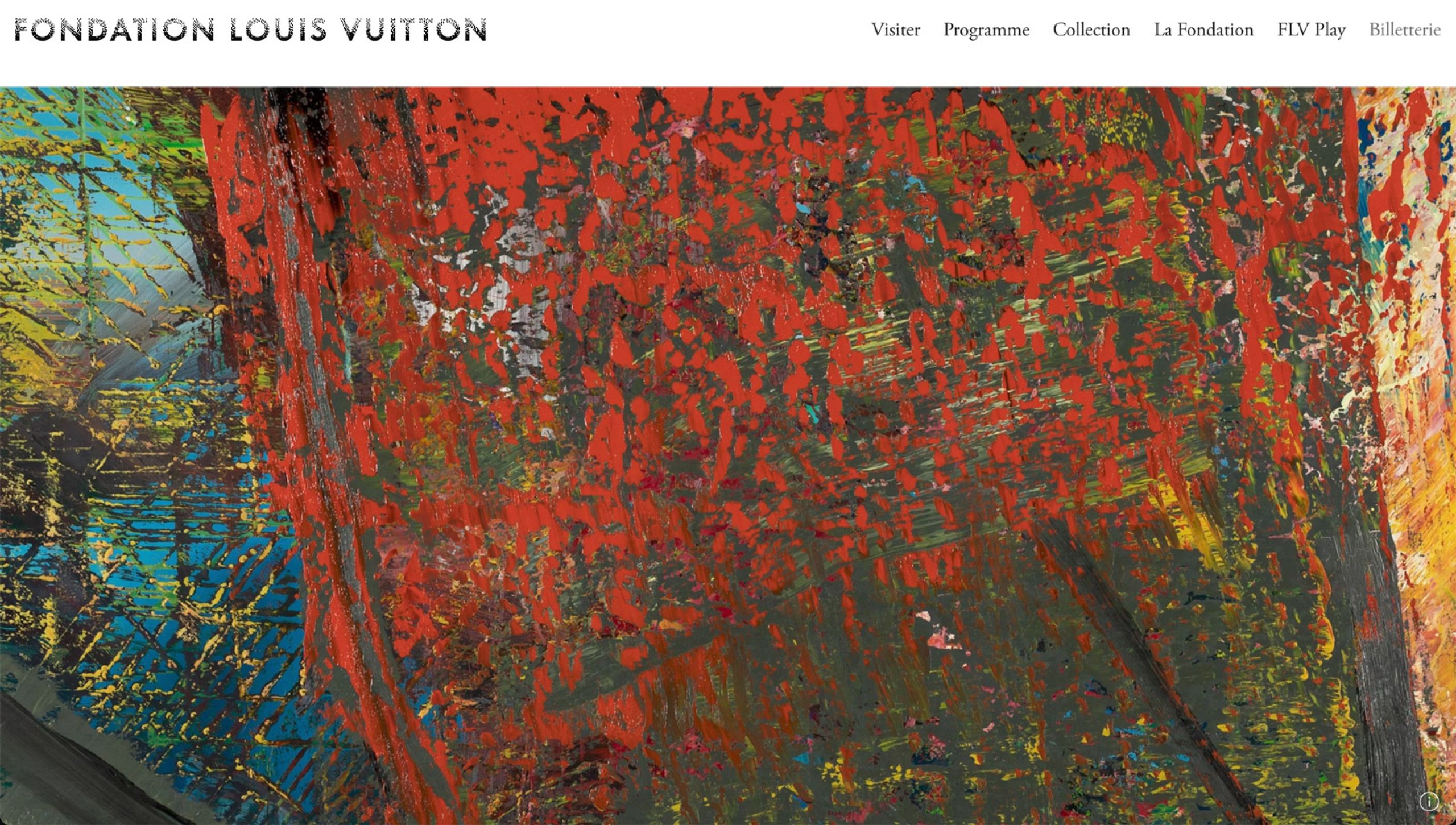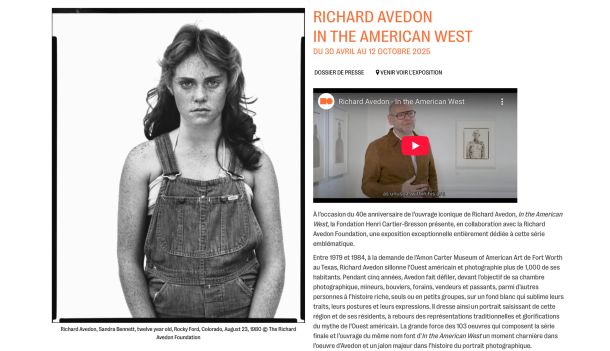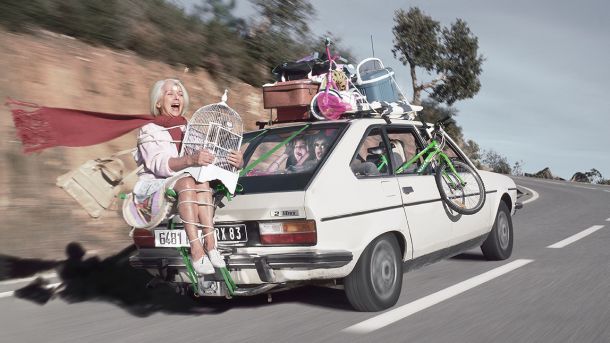Gerhard Richter at the Fondation Vuitton: Painting–Photography Dialogue

Feeling lost when facing contemporary art? The Gerhard Richter exhibition at the Fondation Vuitton sheds light on the mysteries of artistic creation, revealing how this German master transforms photography into abstract painting. Discover how his iconic canvases, emerging from a unique dialogue between figuration and abstraction, redefine modern art history, through a layout designed to highlight the subtleties of this Dresden-born genius.
The Gerhard Richter Exhibition: A Unique Artistic Dialogue
The Landmark Encounter Between Painting and Photography
The Fondation Louis Vuitton presents an exceptional retrospective of Gerhard Richter from October 17, 2025 to March 2, 2026. This exhibition gathers 270 works spanning more than six decades of creation, from 1962 to 2024, marking a milestone in presenting his body of work.
Since the 1960s, Gerhard Richter has explored the dialogue between photography and painting, developing his series of “Photo Paintings” from documentary or family photos. He also experiments with “Painted Photographs,” where the photographic medium becomes the support for pictorial creation, challenging the boundaries between artistic forms.
Gerhard Richter’s Unique Artistic Journey
Born in Dresden in 1932, the artist fled East Germany in 1961 and settled in Düsseldorf. There he developed his unique method combining photography and painting, marking his first solo exhibition in 1964 at Van der Grinten Galerie in Krefeld, shortly before being included in “Nine Young Artists” at the Guggenheim.
| Period | Main Characteristics | Key Works |
| East German Period (before 1961) | Studied at the Dresden Academy of Fine Arts. Created commissioned murals and explored Informalism. Fled to West Germany in 1961. | Communion with Picasso (1955), Joy of Life (1956) |
| Early 1960s | Co-founded the “Capitalist Realism” movement. Developed “Photo Paintings” using photographs with blur technique. | Table (CR: 1, 1962), early photo paintings |
| Late 1960s – Early 1970s | Created “Color Charts.” Began compiling the Atlas, a collection of 4,000 images on 600 panels. | 256 Colours (1973-74), first Atlas exhibit in 1972 |
| 1970s | Introduced “Grey” monochromes and abstract works. Explored textures and application techniques. | Gray (1969), early abstracts in 1976 |
| 1980s | Created symbolic series (Candles, Skulls) and developed squeegee technique. Tackled historical trauma. | 18 October 1977 (1988), Candles and Skulls (1982-83) |
| 1990s | Developed “Overpainted Photographs” (over 2,000 pieces). Experimented with colored glass and mirrors. | Firenze series (1999), Mirror Painting (Grey, 735-2, 1991) |
| 2000s | Designed innovative stained glass (Cologne Cathedral). Explored scientific phenomena in paintings. | Cologne Cathedral Window (2007), Silicate (2003) |
| 2010s | Created “Strip Paintings” via digital processing of abstracts. Made the Birkenau series exploring the unrepresentable. | Strip Paintings (since 2011), Birkenau (CR: 937/1-4, 2014) |
| 2020s | Final major public works. Signed with David Zwirner Gallery in 2022. | Tholey Abbey Windows (2020), break with Marian Goodman (2022) |
Richter’s path is marked by his inquiry into collective memory and German identity. Works like “Uncle Rudi” (1965), based on a photo of his Wehrmacht officer uncle, illustrate how he blends figuration and abstraction to examine representations of historical pasts.
Richter’s Unique Methodology: Between Photography and Painting
The Reinvented Technique of Photographic Blur
Gerhard Richter developed a signature blur technique in painting, mimicking an intentionally missed focus, turning realistic representation into pictorial interpretation.
By smearing paint with a squeegee or cloth, Richter creates a veil that levels elements, erasing sharp details to focus on pictorial texture and underlying emotion.
The Atlas as a Visual Laboratory
Richter’s Atlas is a vital visual archive, collecting personal and documentary images that nourish his artistic language throughout his career.
- Personal photographs (landscapes, family portraits) used as bases for figurative “Photo Paintings” exploring the link between reality and interpretation
- Documentary images (e.g., Auschwitz-Birkenau) turned into abstract paintings to question how to represent the unrepresentable
- Newspaper and magazine reproductions juxtaposing banal and traumatic topics, reflecting his fascination with media imagery
- Sketches and installation views documenting projects like “48 Portraits” or colored glass works
This archive of 802 sheets embodies his philosophy where erasure and revelation build an ethical and aesthetic dialogue between photography and painting.
Photo Painting as a New Form of Expression
Richter’s photo painting is a unique synthesis where the photographic image becomes a matrix for painting, forming a visual language that transcends the limits of both media.
At the Fondation Vuitton exhibition, this approach is shown through his “48 Portraits” or the “Birkenau” series, where chromatic erasure dialogues with historical archives.
Richter’s Interviews on His Hybrid Practice
In conversations with Jan Thorn-Prikker, Richter describes his process as a constant back-and-forth between mechanical image and painterly gesture, asserting that “copying a postcard could lead to an image.”
He emphasizes equality of value between figurative and abstract elements, stating that “everything becomes equally important and equally unimportant”—an echo of his blurred visual approach.
The Constant Oscillation Between Figuration and Abstraction
The Gradual Shift Toward Abstraction
Gerhard Richter gradually incorporated abstraction into his work beginning in the 1960s, alternating between figuration and abstraction to explore artistic representation and visual perception.
Starting in 1966, he experimented with color charts, paving the way for abstract works in 1976, while maintaining a dialogue with photographic reality.
The Birkenau Series and Their Historical Dimension
Richter’s 2014 “Birkenau” series is based on four clandestine photographs taken at Auschwitz-Birkenau in 1944, transformed into abstract paintings by layering colors.
This series confronts how to represent the unrepresentable by progressively covering the documentary image with chromatic layers, materializing a duty of memory without aestheticizing human tragedy.
Richter’s Reflection on Image and Reality
Through his work, Richter questions artistic representation, exploring how abstraction can capture the essence of photographic reality while transforming it.
His “Birkenau” works embody this approach by embedding invisible historical elements, revealing buried memory through paint layers and artistic strata.
Major Works in the Fondation Vuitton Exhibition
Iconic Canvases Presented in the Exhibition
At the Fondation Louis Vuitton, 270 works spanning over sixty years provide a comprehensive look at Richter’s evolution between figuration and abstraction.
- “48 Portraits” (1972): paintings based on photographs of historical figures, showcasing his blur and distancing technique
- “Birkenau” series (2014): chromatic abstractions from archival photos, exploring memory and the unrepresentable
- “STRIP” (2011): digitally generated images from abstract paintings, integrating technology into his visual vocabulary
- “Color Charts” (1966): geometric color samples predating his abstract paintings, marking early experimentation with non-subjects
The exhibition’s chronological layout shows how Richter progressively integrated abstraction while retaining a connection to photographic reality.
The Emotional and Conceptual Impact of the Works
Richter’s artworks evoke nuanced emotional reactions, balancing contemplation and more visceral responses through photographic distancing and abstract expressiveness.
The “Birkenau” series exemplifies this, layering colors over historical photos to materialize collective trauma while avoiding any aestheticization of human tragedy.
Exhibition Design
As a retrospective, the exhibition at Fondation Vuitton offers a chronological journey through Richter’s evolution, from early works to his most recent creations.
Works are organized thematically, including a gallery dedicated to “Painting from Photography,” highlighting how Richter transforms documentary imagery into pictorial creation.
At the Fondation Vuitton, the German artist unveils a dialogue between painting and photography, oscillating between figuration and abstraction. His works, including the “Birkenau” series, question collective memory. An immersive experience not to be missed for understanding the evolution of a contemporary art master.



